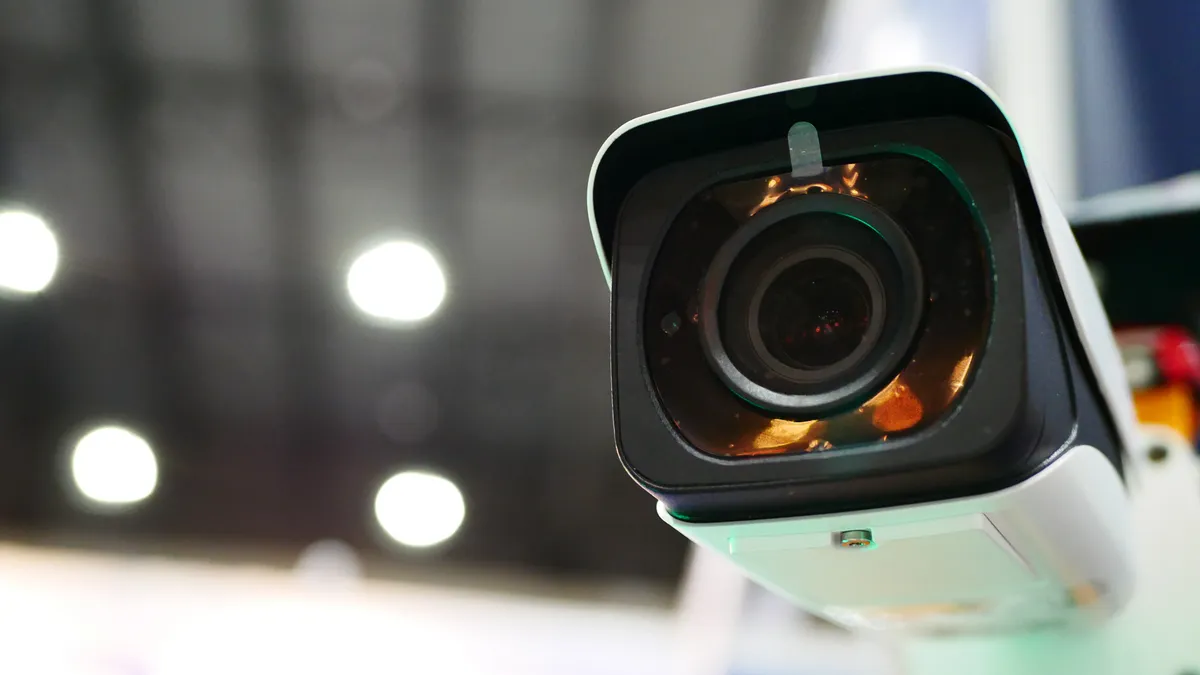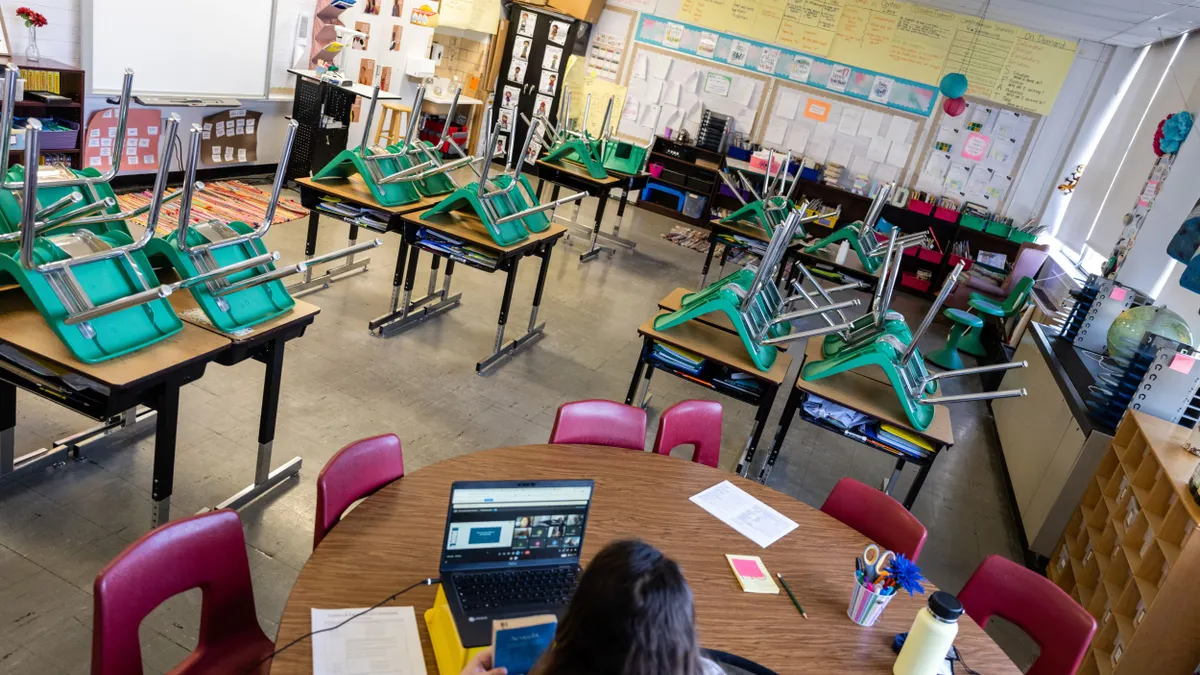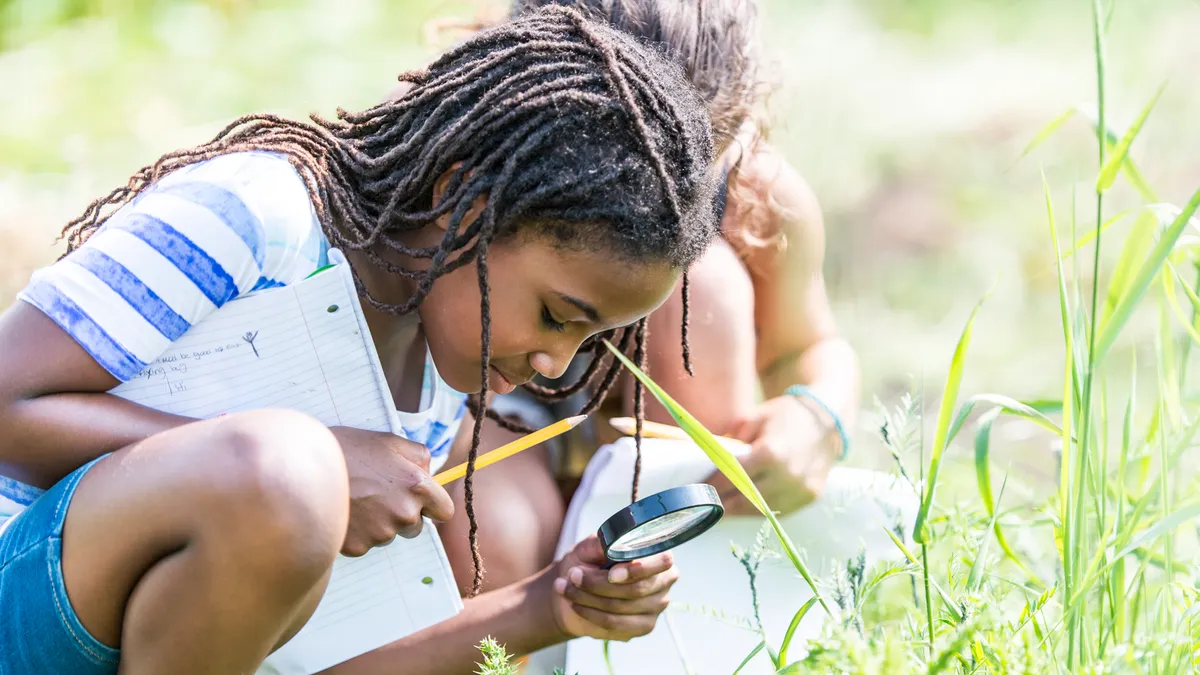High-profile school shootings like the May massacre at Robb Elementary in Uvalde, Texas, bring a resurfacing of ideas and moves to design and redesigning school buildings to address security concerns and prevent the next tragedy.
Implementing measures such as secure main entrance vestibules, metal detectors and security cameras in schools are not new ideas, said Shawna White, senior lead for school safety at WestED, a nonprofit covering education and human development.
“These are not new measures that are resulting from Uvalde,” White said. “They’re coming back to the conversation following Uvalde.”
With 93 incidents, the 2020-21 school year saw the highest number of school shootings within the previous 20 years. Forty-three of these shootings led to deaths, and the other 50 to only injuries, according to a June report by the U.S. Department of Education’s Institute for Education Sciences.
And during calendar year 2022, that number seems to continue increasing, as there have been at least 102 gunfire incidents on school grounds, resulting in 41 deaths and 79 injuries, according to data from Everytown, a gun violence prevention nonprofit.
After the mass shooting in Uvalde, schools experienced an immediate uptick in violent threats.
In response to years of violence on school grounds, schools have been doubling down on security practices.
A National Center for Education Statistics survey found most schools — 91.7% — had controlled access to their buildings in the 2009-10 school year. But that share increased even further, to almost all schools, 97.1%, in 2019-20.
And whereas 61.1% of schools in 2009-10 used security cameras to monitor activity, that percentage jumped to 91.1% in 2019-20, NCES reported.
Security vestibules and cameras
Security vestibules, which allow school staff to buzz in visitors to the building, have been encouraged as a best practice in school safety construction for years, White said.
Roe Gammon is a security consultant at Henderson Engineers, a Kansas City-based national design firm that has worked on more than 900 K-12 projects in 150-plus school districts. In recent years, Gammon said, he’s noticed more districts interested in upgrading school buildings to include security vestibules. More immediately, Gammon said he has seen higher demand for adding cameras inside schools, specifically in hallways.
When installing cameras in hallways, Gammon said it’s important to protect children's identities by not using high resolution video. But video cameras directed toward school entrances should allow officials to identify faces, he said.
“We’ve had some schools where they want effectively every square inch covered,” Gammon said. “Not at a high resolution. It’s not like you’re tracking a child’s face as they go through. We try to strike a pretty privacy-centric balance there.”
Open concept design?
Open concept architecture designs with plenty of natural and high-quality lighting can, in some ways, be a security measure to make students feel more comfortable and safe, Gammon said.
While he recognizes the fear of a major safety issue happening in an open concept space, particularly if there were a mass shooting, Gammon said if done properly safety can be enhanced by fostering more connections among learners.
“You’ve got more of a community, you’ve got more support, stronger relationships. It’s easier to protect against bullying, which is automatically a little less of a threat,” Gammon said.
To Kenneth Trump, president of consulting firm National School Safety and Security Services, collaborative learning spaces can be great from an academic standpoint, but those open spaces and increased placement of glass can present a physical security concern.
Sometimes there’s nowhere to lock down without being visible in these kinds of spaces during an emergency, he said.
The challenge for both new and remodeled schools, Trump said, is that “architects design schools to meet educational needs and to win awards so that those models can be replicated in their services that they sell to other school districts.”
Hardening schools too much?
Hardening schools too much can also create its own set of problems, particularly when increasing the use of security cameras at schools,according to a 2018 study published in the Journal of Adolescent Health found. The study analyzed school climate surveys among 54,350 students from 98 middle and high schools across the state of Maryland beginning in 2014.
Higher use of school security cameras inside a school was tied to lower student perceptions of safety, equity and support, according to the study. Moderate levels of cameras placed outside a school, however, were associated with stronger student perceptions of support.
The study said its findings suggest “outside cameras and security may be perceived by students as safekeeping, whereas inside cameras may evoke feelings of being viewed as potential perpetrators who need surveillance.”
Besides increasing a school’s physical security, it’s important to focus on other potential solutions to address school safety concerns, White said.
This includes providing more mental health resources to districts so they can provide early interventions for troubled students, she said. Community schools aiming to serve broader wellness needs of students and families are another alternative to hardening buildings for security.
Just a month after the Uvalde shooting, Congress passed the Bipartisan Safer Communities Act to provide over $2 billion, in part, to fund mental health services and improve learning conditions in schools.
Overall, White said, security practices and processes won’t be able to prevent violent incidents in schools if staff are not regularly trained about measures such as safety communication standards or door locking systems.
“We need to be doing more awareness training and refresher training on a regular basis to remind people why it’s important, not just when these tragic events take place,” White said.




















